Evolutionary Ecology
The department of Evolutionary Ecology gathers complementary skills in behavioural ecology, population dynamics, population biology, community ecology, and methodology (statistics and modelling). The research done in the department aims at studying how animal species evolve in a changing world by understanding the causes of the evolution of traits, adaptations and interactions. For that, we consider different levels of organization from individuals to populations and communities. Because organisms cannot be considered isolated from other biotic factors, we consider pathogens but also competing species within communities.
We study how individuals adapt to their environments that are largely impacted by anthropic pressures, and how life history traits and behaviour evolve in response to these pressures. Although we mainly focus on phenotype, we more and more consider the mechanistic link between the genotype and the phenotype. We develop the theoretical framework of our discipline through a conceptual and modeling approach. In parallel, we test hypotheses that arise from theoretical predictions through experimental, comparative and observational approaches on different biological models (insects, birds, mammals). Experimental approaches are developed in the laboratory (insect model) and in natura (bird, insect and mammal models). Observational and comparative research is mainly concerned with vertebrates. Our approaches are also, and increasingly, interested in the mechanisms of adaptive responses. In addition to the classical approaches of demographic analysis and trait change, methods of ecophysiology, chemical ecology and molecular biology are used.
Our department hosts several long-term studies of wild populations of different species. These long-term studies offer a valuable way to understand how biotic and abiotic factors affect individuals’ life history traits, and the functioning of populations in natura. Five populations of mammalian species are thus monitored for several years (more than 40 years on roe deer, 30 on Alpine marmots, 25 years on cats, 16 years on zebras, and 20 years on impala). Two of our study sites (La Sassière in Vanoise National Park (Alpine marmots) and Hwange National Park) have been certified as “Site d’Etude en Ecologie Globale” (SEEG), and two (ZA “Hwange” and ZA “Antarctic and sub-Antarctic”) were certified as “Zone Atelier” by the CNRS.
The department of Evolutionary ecology is also largely involved in training activities. Lastly, we also have strong socio-economic relationships. Indeed, because we address questions of major societal interest (global warming, public health) we tightly collaborate with socio-economic partners (Office Français de la Biodiversité, Vanoise National Park, Hwange National Park in Zimbabwe, Office National des Forêts, etc.) and participate to general public and media events.
Publications
Display of 1471 to 1500 publications on 2459 in total
Response of native soil microbial functions to the controlled mycorrhization of an exotic tree legume, Acacia holosericea in a Sahelian ecosystem
Mycorrhiza . 22 ( 3 ) : 175--187
Journal article
see the publicationRestoring native forest ecosystems after exotic tree plantation in Madagascar: combination of the local ectotrophic species Leptolena bojeriana and Uapaca bojeri mitigates the negative influence of the exotic species Eucalyptus camaldulensis and Pinus pat
Biological Invasions . 14 ( 11 ) : 2407--2421
Journal article
see the publicationUse of monthly collected milk yields for the detection of vector borne emerging diseases: a simulation based approach
13. Symposium of the International Society for Veterinary Epidemiology and Economics (ISVEE) . : 580 p.
Conference paper
see the publicationSensitivity of mortality reporting by the French oyster farmers
13. Symposium of the International Society for Veterinary Epidemiology and Economics (ISVEE) . : 580 p.
Poster
see the publicationZoonoses bactériennes et virales liées à la faune sauvage autochtone
Journées Nationales des Groupements Techniques Vétérinaires (JNGTV) . : 1080 p.
Conference paper
see the publicationSurveillance of disease emergence in dairy cattle using reproduction data
Society for Veterinary Epidemiology and Preventive Medicine (SVEPM) . : 310 p.
Poster
see the publicationLa coproscopie chez le cheval
Le Nouveau Praticien Vétérinaire . 8 : 116--120
Journal article
see the publicationRéalisme environnemental des modèles de populations pour l'évaluation de l'impact démographique de la toxicité des contaminants : exemple de la prise en compte de la variabilité saisonnière chez les invertébrés aquatiques
SEFA . : 43
Conference paper
see the publicationUse of sensitivity analysis to identify influential and non-influential parameters within an aquatic ecosystem model
Ecological Modelling . 246 : 119--130
Journal article
see the publicationUse of sensitivity analysis to identify influential and non-influential parameters within an aquatic ecosystem model
Ecological Modelling . 246 : 119-130
Journal article
see the publicationMonitoring population size of mammals using a spotlight-count-based abundance index: How to relate the number of counts to the precision?
Ecological Indicators . 18 : 599--607
Journal article
see the publicationA multi-event model to study stage-dependent dispersal in radio-collared hares: when hunting promotes costly transience
Ecology . 93 ( 6 ) : 1305 - 1316
DOI: 10.1890/11-1742.1
Journal article
see the publicationPutative endosymbiont-mediated coexistence of weevil sibling species competing with each other
7. International Symbiosis Society (ISS) Congress "The earth’s vast symbiosphere" .
Poster
see the publicationSexual and asexual oogenesis require the expression of unique and shared sets of genes in the insect Acyrthosiphon pisum
BMC Genomics . 13 : 76
Journal article
see the publicationEvolutionary systematics and biogeography of endemic gerbils (Rodentia, Muridae) from Morocco: an integrative approach
Zoologica Scripta . 41 ( 1 ) : 11-28
Journal article
see the publicationPopulation-Level Modeling to Account for Multigenerational Effects of Uranium in Daphnia magna
Environmental Science and Technology . 46 : 1136--1143
DOI: 10.1021/es202658b
Journal article
see the publicationWhat to do with NOECS/NOELS - prohibition or innovation?
Integr Environ Assess Manag . 8 : 764--766
DOI: 10.1002/ieam.1350
Journal article
see the publicationContrasted breeding strategies in four sympatric sibling insect species: when a proovigenic and capital breeder copes with a stochastic environment
Functional Ecology . 26 ( 1 ) : 198-206
Journal article
see the publicationModeling of Clostridium perfringens vegetative cell inactivation in beef-in-sauce products: A meta-analysis using mixed linear models
International journal of food microbiology . 154 : 44--51
Journal article
see the publicationTransfer of PCBs from bottom sediment to freshwater river fish: A food-web modelling approach in the Rhône River (France) in support of sediment management.
Ecotoxicology and Environmental Safety . 81 : 17-26
Journal article
see the publicationBSAFs for freshwater fish and derivation of a sediment quality guideline for PCBs in the Rhone basin, France
Journal of Soils and Sediments . 12 ( 2 ) : 241-251
Journal article
see the publicationFacing multiple information sources while foraging on successive patches: how does a parasitoid deal with experience?
Animal Behaviour . 83 : 189--199
Journal article
see the publicationEstimating demographic parameters using hidden process dynamic models
Theoretical Population Biology . 82 : 307 - 316
Journal article
see the publicationChanges of population trends and mortality patterns in response to the reintroduction of large predators: The case study of African ungulates
Acta Oecologica . 42 : 16--29
Journal article
see the publicationLinking the population growth rate and the age-at-death distribution
Theoretical Population Biology . 82 : 244--252
Journal article
see the publicationModeling reproductive trajectories of roe deer females: Fixed or dynamic heterogeneity?
Theoretical Population Biology . 82 : 317-328
Journal article
see the publicationThe oak browsing index correlates linearly with roe deer density: a new indicator for deer management?
European Journal of Wildlife Research . 58 ( 1 ) : 17--22
Journal article
see the publicationThe Quest for Immortality in Triatomines: A Meta-Analysis of the Senescence Process in Hemimetabolous Hematophagous Insects
incollection . -- : 225-250
Journal article
see the publicationNatural simian immunodeficiency virus transmission in mandrills: a family affair?
Biology Letters . 279 ( 1742 ) : 3426-35
Journal article
see the publicationRabbit zona pellucida composition: A molecular, proteomic and phylogenetic approach
Journal of Proteomics . 75 : 5920--5935
Journal article
see the publication
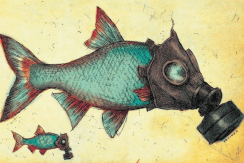
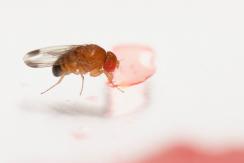
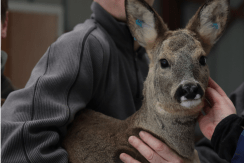
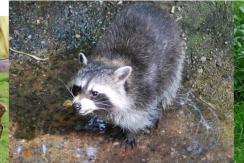
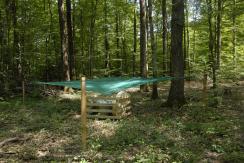
You also, comment on this article